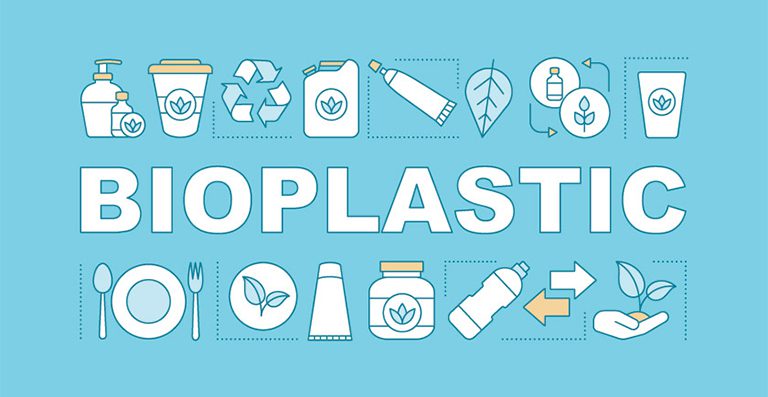Latest in Global Bioplastics or Recycled Plastics Industry
The global resins and plastic material is predicted to grow at a rate of 7.2%. The market is witnessing a huge surge from $466.2 billion in 2020 and is likely to reach $659.2 billion in 2025.
After 2025, the plastic material market is expected to reach $784.2 billion in 2030, at a CAGR of 3.5%. Clearly, the plastic industry is showing no signs of slowing down.
However, there is still one such segment in the plastic industry that is gaining tons of momentum, and that is the bioplastic industry.
According to a recent report, the world population is increasingly becoming Eco-conscious. This has led to a rise in the demand for eco-friendly plastics or bioplastics. Bioplastics are manufactured from polymer resins that are derived from plastics and plants that are decomposed with the help of bacteria.
There has been a huge surge in sustainable products that can be easily recycled, and the demand continues to rise each day. For example, in 2017, global bioplastic production was estimated to be roughly 6.2 million tons. In 2021, the global market for biopolymers and bioplastics is anticipated to be $5 billion. There is also a huge demand for eco-friendly plastic products in 2021. In fact, many huge companies are producing bioplastics from natural materials such as corn starch. Some organizations are also developing plastic products using flax and soybean.
Bioplastics are now extensively used in various industries such as medical applications, goods packaging, food packaging, among many others. For instance, bioplastics are widely used in the packaging industry to manufacture trays, waste collection bags, compostable medical applications, pills, implants, and capsules.
Resin and plastic material manufacturers are also using recycled plastic products as raw materials to reduce carbon footprint, minimize the cost of raw materials and limit the dependence on other raw materials such as gas and oil. Recycled plastics possess properties that are identical to virgin plastics (plastics manufactured without using recycled plastics). They also contain only a tiny percentage of impurities.
What’s more, recycled plastics have a carbon footprint that is almost 85% smaller than virgin plastic. They also cost 25% less than virgin plastics made from raw materials like gas and oil. For example, Adidas collaborated with an organization known as Parley from the Oceans, to manufacture products that are made from plastics recovered from the ocean. USA-based cleaning products brand, Method Products, are also using recovered plastic from the ocean for their products, thereby, limiting the manufacture of new plastics by using recycled plastic.
We hope you have gained some noteworthy insights from this article. In conclusion, the bioplastics or recycled plastics market shows immense potential and is without a doubt, the future of plastic products. It will not only benefit the environment and preserve natural resources, but will also be less expensive to manufacture. This will surely propel the industry to reach new heights in the upcoming years.
Leave a Reply Cancel reply
Recent Posts
- Understanding The Materials That Are Used To Build Plastic Toys
- All You Need To Know About Food-grade Plastics
- A Glance At The Materials That Boost The Performance Of Plastics
- Understanding The Importance Of Exploring New Business Opportunities In The Plastic Industry
- Understanding The Importance Of Investing in R&D For The Plastic Industry
Categories
- 3D Printing
- AIPMA
- Automation
- Automobile Sector
- Bio Plastics
- Environment
- Innovations In Recycling
- Latest Innovations
- Molds & Dies
- News
- Packaging Industry
- Plastic
- Plastic Application
- Plastic Industry
- Plastic Market
- Plastic Myths
- Plastic News From The World
- Plastic Packaging
- Plastic Products
- Plastic Recycling
- Plastic Solar Cells
- Plastic Toys
- Plastic Waste
- Plastic World
- Plastics
- Plastics And Their Applications
- Plastics In Agriculture
- Plastics In Healthcare
- Plastics In Medical Industry
- Plasticulture
- Processing Machinery
- Recycling Machines
- Robotics
- Uncategorized
- Virtual Reality
Archives
- November 2023 (3)
- October 2023 (2)
- September 2023 (3)
- August 2023 (3)
- July 2023 (3)
- June 2023 (3)
- May 2023 (2)
- April 2023 (2)
- March 2023 (2)
- February 2023 (2)
- January 2023 (2)
- December 2022 (3)
- November 2022 (1)
- October 2022 (1)
- September 2022 (2)
- August 2022 (1)
- July 2022 (3)
- May 2022 (3)
- March 2022 (2)
- February 2022 (1)
- January 2022 (1)
- September 2021 (2)
- August 2021 (3)
- July 2021 (4)
- June 2021 (4)
- May 2021 (3)
- April 2021 (2)
- March 2021 (4)
- November 2019 (8)
- October 2019 (8)
- September 2019 (8)
- August 2019 (8)
- July 2019 (8)
- June 2019 (8)
- May 2019 (8)
- April 2019 (8)
- March 2019 (8)
- February 2019 (11)
- January 2019 (8)
- December 2018 (8)
- November 2018 (12)
- October 2018 (12)

